Things have been busy, or at least that’s the excuse I give myself for not writing this post for so long. I just finished my last night class, which had been running since November, and the spring semester is nearly over too. So things are beginning to wind down: the exchange students, Americans in the Russian flagship program, the PiA fellows in Kyrgyzstan, and my co-fellow are all leaving Central Asia in May. I also know that I’ll be going home just a couple months after them in August. August, August, August— the month I both hate and can’t stop thinking about. Some days it seems impossibly far away. Some days I wish it was a little bit further off.
I can’t think— let alone write— too much about it. Keeping my time horizon short has been, perhaps, the most important lesson I’ve learned here. There is today. There is tomorrow. There is the deadline for final grades on Friday. Otherwise, things can get mushy and scary. I might start thinking about where I’ll see my parents and sister next (in Chicago? Milwaukee? Almaty?? Paris???). I might start thinking about when I’ll see my friends who are scattering around the US (how will I get around to all of them? Money??). And, most dreadfully, I have to start thinking about what I might want to do next (taking the small, soul-sucking steps like updating my LinkedIn and drafting cover letters).
I still have time, though. Since my last post, I’ve done some more stuff and have been thinking about some different things.
Chapter 1: Uzbekistan
Starting from the end
A text conversation:
Toward the end of the Uzbekistan trip, I was thinking that I was having a pretty crazy time, a pretty wild adventure, a blog-post-worthy series of events— as you might be able to tell by my message to my dad (who uses “barreling” in a text?). Let me set the scene:
The previous evening, we finished seeing the “bug pit” where two British men had been tortured for years by the Emir of Bukhara (more on this later) before heading to the Bukhara hammam. At the hammam, the men working told Jacob, a Brit (by way of Whales) whom I now call a good friend, travel companion, and clutch Russian translator, and me to take off all our clothes and replace them with small towels. We then went into a hammam that had been in operation for hundreds of years. According to Jacob, one of the Russian guys splayed out in the sauna room said that if you haven’t been to the Bukhara hammam, you haven’t been to Bukhara. Indeed, it was not an experience I am likely to forget soon.
After we warmed up, a short man, who was clearly comfortable working in the nearly nude despite having a bit of a pouch, called me over to the massage room, inside of which was a large stone slab and a bucket.
He said, “sit down.” I sat down. He dumped a bucket of water over me.
He said, “lie down.” I lay down. He then began to wash me, give a massage, and bend my body in ways that I thought it couldn’t. He cleaned my ears with his fingers. He cracked every finger and toe. At one point, he sat on my butt and pulled my legs back into a scorpion position. After a bit of small talk, there was little else said besides my involuntary groans when I thought he might literally break me and his repeated command whenever my body tensed up: “relax.”
After the massage, I was told to lie in the sauna room again after having a ginger and honey paste rubbed on my back. As he was applying it, he said, “it’s good for sex.” I said, “ah, okay.”
After we were drenched with one last bucket of cold water, Jacob and I drank tea and ate sugar candies in the lobby/changing room. We wandered back through the winding streets of central Bukhara feeling euphoric. We met up with Lena and some other friends next to the famous Kaylon Minaret (more on this later). There, I realized I had misread the military time on the train ticket back to Tashkent. We had forty minutes to get to the train station twenty minutes away.
We ran back to our guest house, said goodbye to the caretaker, who reminded us to please rate her place five stars on Booking.com, wondered where the dying fish in the bucket in the courtyard had gone, and rushed into a Yandex to the train station.
Out of Bukhara, past the LNG gas stations with barriers between fuel pumps in case of accidental explosion, by the outdoor stoves full of cooling coals after the last shashlik skewers had been served, our taxi drove. We flew through train station security and onto our train but not before seeing Uzbek soldiers with AK-47s guarding the first few train cars with bars on the windows. Apparently, as Jacob would learn and relay to us later, our overnight train back to the capital was also serving as transport for prisoners.
While on a top bunk of my shared coupe, I got that text from my dad. Little did I know the next day was really when the blog-worthy-stuff would begin.
***
The next morning, we arrived in Tashkent, looking rough and feeling worse. No one had slept well on the train. As soon as the rocking of the bed felt somewhat soothing, the train would stop. Then it would start again. We crashed at a 24-hour cafe, went to a thrift store that inexplicably had bought crates of clothes from American thrift stores that had not sold in the US, and ate some of the best Georgian food I’ve had to date.
No one was happy to be getting back on a train for the next 24 hours, but we put on a brave face. When we saw the train, however, we were nearly crushed. When we hopped aboard, we were crushed. Like the train the night before, it was an old Soviet train: small windows (ours was broken), metal beds with thin mattresses, two bathrooms shared by the sixty or seventy people in the car with a toilet that flushed onto the tracks.
The outside of the train said the route: “Tashkent to Novosiberisk.” Nearly all of the rest of the men in our cabin were migrant workers, heading to Novosiberisk for a stint working in the city’s informal economy. The guys next to us were going into business together selling fruits and vegetables.
The first seven hours were a sweaty, slow affair. The Uzbek border guards searched everyone’s bags at the border. Then, the Kazakh guards searched everyone’s bags again and checked our passports. The whole customs process took five hours. Peddlers, hustlers, and scammers walked through the cabin selling cheap electronics, snacks, drinks, conducting bootleg money exchanges, and selling plov. We bought some beers from the train cook with the last of our hyper-inflated Uzbek Som ($1 USD = 11,437 UZB Som) and waited.
Around 11:30 pm, we were playing Durak, the most popular card game in post-Soviet countries, with the Uzbek guys around us. Earlier they had given us some of their food: homemade patties made of beef (probably?) that seemed a bit unappetizing but actually tasted almost exactly like MorningStar veggie patties. Crucially, they had also opened a small window, allowing some circulation in the cabin. The Durak hand was getting down to the last three players. I was still in and focused on trying not to screw up the game when two train police officers in full dress uniforms came to us and motioned for Lena, Jacob, and me to get up.
Suddenly, they began turning over our food bags, luggage, and bedding. They were looking for alcohol, the alcohol that the cook had sold to us at the beginning of the ride.
Earlier, we had been confused when a train worker came around, saw our empty bottles and said “no alcohol.” An Uzbek border officer also noticed our bottle caps laying out even after we hid the empty bottles. He scolded us. But we were leaving Uzbekistan, so I guess he didn’t really care.
The Kazakh train police were frantically searching our things, and Lena and I went into “я не говорю по-русски” mode, playing the now-familiar confused foreigner card. A prayer was answered, and the guards didn’t find the empty bottle under Lena’s seat and the two under mine. They left. As we sat back down, the Uzbeks explained that we could have alcohol but couldn’t drink it on the train. We asked what to do with the bottles. They said “give them here,” climbed up to the small window on the second bunk, and tossed the bottles out of the moving train car. When I heard the last bottle hit the tracks, I knew the evidence was gone and breathed easier. We all went back to the game. I’m not sure if it was the police, the lack of real food, the lack of sleep (4 hours in the last 48), the fact I was still wearing the clothes from two days before, the nervousness of being surrounded by so many strangers who were naturally wondering what these foreigners were doing in the 3rd class section, or something else, but when I held up my hand to show the group the new trump card for the next round, it was slightly shaking.
A bit more on Uzbekistan:
Tashkent: A pretty typical post-Soviet city, Tashkent felt a lot like Almaty, just a bit more rundown, a bit more autocratic, and a bit hotter. We rode the semi-famous Tashkent metro, the oldest metro in Central Asia. We ate plov from the Central Asian Plov Center, which, according to the Uzbeks on our train, is a bit touristy and overpriced. It didn’t feel too touristy, but that’s probably because most of the Uzbek tourism industry is less than ten years old. Uzbekistan’s first president, Islam Karimov, had a stranglehold on the country that kept most people out until his death in 2016. While the country is still autocratic, Karimov’s successor, Shavkhat Mirziyoev, has openly promoted tourism since taking power.
That’s really it on Tashkent. Like all cities in Central Asia, there are more Russians than usual because of the war. Our hostel had quite a few Russian guys who seemed to have been staying there for months, hanging out, watching movies, and making tea at all hours.Samarkand: We arrived in Samarkand at night. Unlike Tashkent, which was rebuilt by the Soviets after a devastating earthquake in 1966, Samarkand felt ancient. On the way to the guest house, our Yandex driver got stuck in the narrow back allies. We then wandered around the dusty city center looking for food. It felt like we were walking on the set of a biblical movie. The streets were dark and winding. I fell into a drainage ditch while trying to cross the street, recovered, and kept wandering until we found a couple open restaurants. As we sat down, the shashlik grills were just being put out for the night. We ate, drank, and walked back to our guest house. Little did we know, we had just dined nearly straight across from Registan, the most famous architectural sight in Uzbekistan.
Bukhara: My favorite of the three cities, Bukhara had all the silk road mystic that Samarkand had without any Soviet make-overs. It feels quieter, less commercial, more raw. Perhaps the city’s ambiance is due to its occasionally brutal past. Perhaps I’m full of [redacted].
From the balcony of the guest house we stayed at in the old city, I could see the legendary Kalyan Minaret. Standing 48 meters high, the Kaylan Minaret has served as a reminder to pray five times a day, the center of a larger mosque complex, and a means of executing those unlucky enough to get on the Emir of Bukhara’s bad side. Offenders were thrown to their death from the top of the minaret. The last recorded execution took place in 1920 during the Russian Revolution.
Today, venders sell cheap T-shirts, jewelry, and Soviet antiques on the edge of the courtyard. It’s hard to imagine the executions that took place, but it’s easy to understand how the Kaylan Minaret must have seemed impossibly tall in ancient times. Indeed, Ghengis Khan felt the same way: he ordered that the minaret be spared as the rest of his horde leveled the city in the 1200s.
The Kaylan Minaret and the Ark of Bukhara, the royal complex from which the Emir of Bukhara ruled and outside of which were more public executions, are by far the most iconic structures of Bukhara’s past. However, down a side road is the Zindan Prison, a smaller mud brick building, which holds Bukhara’s most infamous attraction: the bug pit.
As a part of the fight for control over Central Asia between Britain and Russia in the 19th century, dubbed the “Great Game,” a name which reflects both of the conquering powers’ view of colonization, Charles Stoddart, a British Colonel, arrived in Bukhara in 1839. Though his job was to assure Khan Nasrullah, the Emir of Bukhara, that the British did not plan to continue their invasion of Afghanistan into his territory, he insulted the Emir with a series of diplomatic gaffes: he rode his horse into the castle instead of walking, arrived with a letter from the British governor of India instead of the Queen, and brought no gift. For his transgressions, the Emir, nicknamed the Butcher of Bukhara, threw Stoddart in a 6.5 meter deep hole in the Zindan Prison. Stoddart lived in that hole for a year. Guards would regularly throw scorpions, rodents, and other creatures into the hole, hence the name. About two years into his imprisonment, another British man went to Bukhara to request Stoddart’s release. He too was thrown into the bug pit. Together, the men lived in the bug pit for one more year until the Emir eventually ordered them to be taken out. Apparently, when the men emerged, they were covered in sores, their hair, beards, and clothes infested by lice. They were ordered to dig their own graves and then executed.
Now, I write this all because it’s just too crazy not to share, but at the same time, I want to be careful not to shade Uzbekistan or the city of Bukhara as a brutal or “savage” place. It’s not. It’s lovely. The people of Bukhara understand better than anyone else the history of their city. Indeed, the man who pointed out the location of the Zindan Prison to us said that the Emir of Bukhara was a very evil man. Yet, in March, the trees were flowering, the weather was warm but not oppressively hot, and the city had a quiet buzz. It’s still enough off the beaten path that it’s not overrun by tourists. If you’re ever in the neighborhood, meaning if you’re a direct flight away from Tashkent, go to Bukhara.
Chapter 2: Astana
The strangest capital in the world? The future or dystopia?
Astana might be the furthest thing from Uzbekistan’s silk road cities. It is a real-life experiment in city planning. The Kazakhstani government has effectively tried to fast-forward a single place from an obscure, Soviet agrarian city to an ultra-modern metropolis that they would like to be in the same conversation as Dubai or Singapore.
It is a city with a strange history with many distinct eras and name changes.
It had been an outpost on the Ishim river called Akmolinsk (sometimes Akmola, accounts differ) before being renamed Tselinograd during the Soviet Virgin and Idle Lands campaign. After Kazakhstan’s independence, it was renamed Akmola, meaning “white grave,” a fitting name given the often snow-covered plains all around. In 1998, it became the capital of Kazakhstan and was again renamed, “Astana,” which means “capital city” in Kazakh. In 2019, the city was renamed Nur Sultan after the country’s first president Nursultan Nazarbayev— until he fell out of favor following the January events. It has now been changed back to Astana and holds the world record for the city with the most name changes.
It’s a strange, strange place. It has officially jumped Baku in my list of strangest cities.
On one side of the plane’s descent into the city, you can see nothing but the steppe out the window. On the other side, there are cranes constructing new apartment buildings, then a city. There are no suburbs. The city comes out of nowhere. When we were first walking around, Jacob said the city feels like “an insult to God,” a sentiment we all shared.
On the streets, it feels empty. A colleague in Almaty told me that Astana feels like “a city without a soul.” Apparently the city’s population tops 1 million. While I was there, I wondered where everyone was.
It turns out the answer is a bit depressing: everyone’s at the mall. On the cold streets— Astana is the world’s second coldest capital city— there was almost no one. But malls full of people are everywhere.
In spite of this, we still had a good time. A few highlights:
In the Khan Shatyr mall, we went on a rollercoaster and saw the artificial beach on the fifth floor with sand originally shipped from Dubai. Just outside, we marveled at the dystopian perfection of the city. We then walked up to the presidential palace before guards with large guns told us we could go no farther.
Visiting a Nazarbayev pet project: the Astana Grand Mosque, the largest mosque in Central Asia. It’s hard to describe just how grand the grand mosque is. The minarets tower high above the surrounding steppe. Inside, there is a cafeteria, museum, play area with a jungle gym, and a few small stores. There is a parking garage. The floors are heated.
We celebrated the new year by eating Nauryz Kozhe, a traditional Kazakh food consisting of seven ingredients: meat (usually horse), kefir (fermented milk), water, barley, rice, corn, and salt.
Chilling in front of the Palace of Peace and Reconciliation aka the big pyramid.
The scene:
We’re taking a taxi to the other side of the city to check out the Ishim river. Out of nowhere, there is a giant pyramid. All right, okay, yes, for sure. No one is fazed because we are in Astana.
Chapter 3: Back in Almaty
Learning to appreciate this place
My hairdresser began to straighten my hair. Then she began to comb it over from left to right. Finally, she blow-dried it for the second time. For a curly-haired person such as myself, this is sacrilege, this is a crime, this could get her sent to the Hague for violating my human rights. Looking in the mirror, I saw the post-Soviet-politician side part.
During the appointment, she went down some interesting threads of conversation. She asked if America really had drugs and “бардак,” which translates to “mess,” “chaos,” “brothel” or “whorehouse.” I didn’t really know what to say, so I just told her that there was a techno club in Almaty called бардак. She asked me (this time through a translator) if people ever tried to fight me there because I was a foreigner. I said no. She told me that she was concerned about the Chinese border opening up because there were so many Chinese and gave me that eye-brows raised look that implicitly says “you know what I’m saying, right??”
Still, it was a success, a great success. The first time I walked into that salon, I knew basically no Russian. We did the whole appointment using translation apps on our phones, and I mostly kept silent. Last week’s appointment was my fourth with her. And though we still are basically strangers, every time I go there it feels like a progress report and a testament to the fact that I actually am a thread in the carpet of Almaty— a headphone-wearing, Russian-mumbling thread on the far outside of the carpet. But there still.
And, after traveling more around Central Asia, I’m grateful that I’m a thread here, not anywhere else. It is almost unanimous within Kazakhstan that Almaty is the place to be. And while the history of Bukhara and Samarkand cannot be matched, I would not want to live in any of the Uzbek silk road cities. They feel too stuck in time while Almaty, especially now that the horrible winter has passed, feels like it is on the come up. The city finally has the heartbeat that people said it would but I hadn’t seen until recently.
Nearly seven months in, the Almaty pride is kicking in.
I took this photo while hiking around an area that used to be a dam. Apparently, it broke some time ago and almost flooded the city. Now, you can hike around in the ruins and see views like this.
Thanks for reading this long-overdue blog post. I’ll be traveling to Thailand, Laos, and Vietnam tomorrow (ah!), so I’m sure I’ll do a blog on that sometime in June. Let me know if you see any mistakes, so I can fix them and save myself future embarrassment. I also recently heard that I will most likely be finishing work in Kazakhstan at the end of July and will be leaving the country in early August. I’ll be doing some traveling after that, but I should be back in the US by mid to late August!
With Love,
Jack Styler




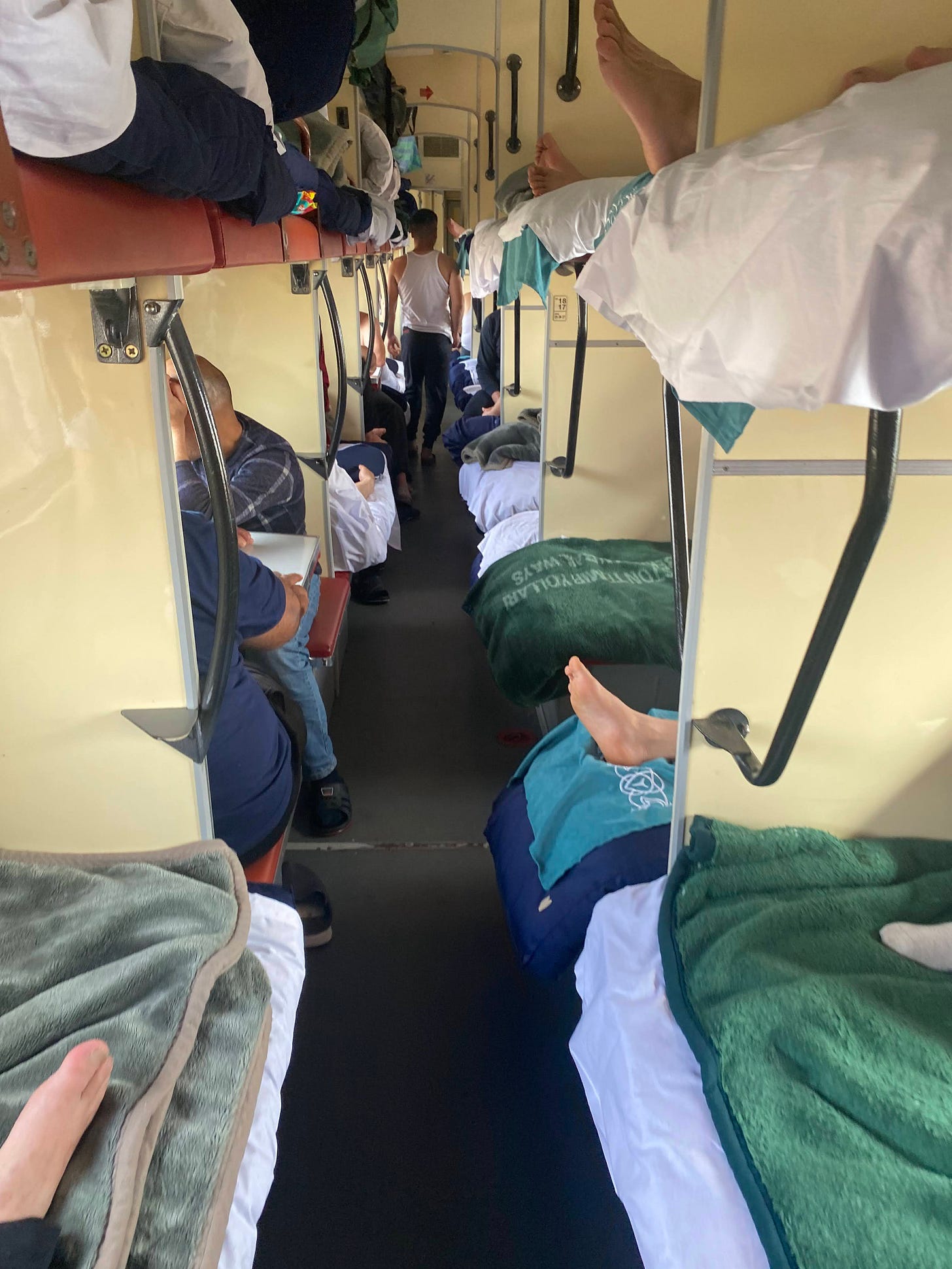


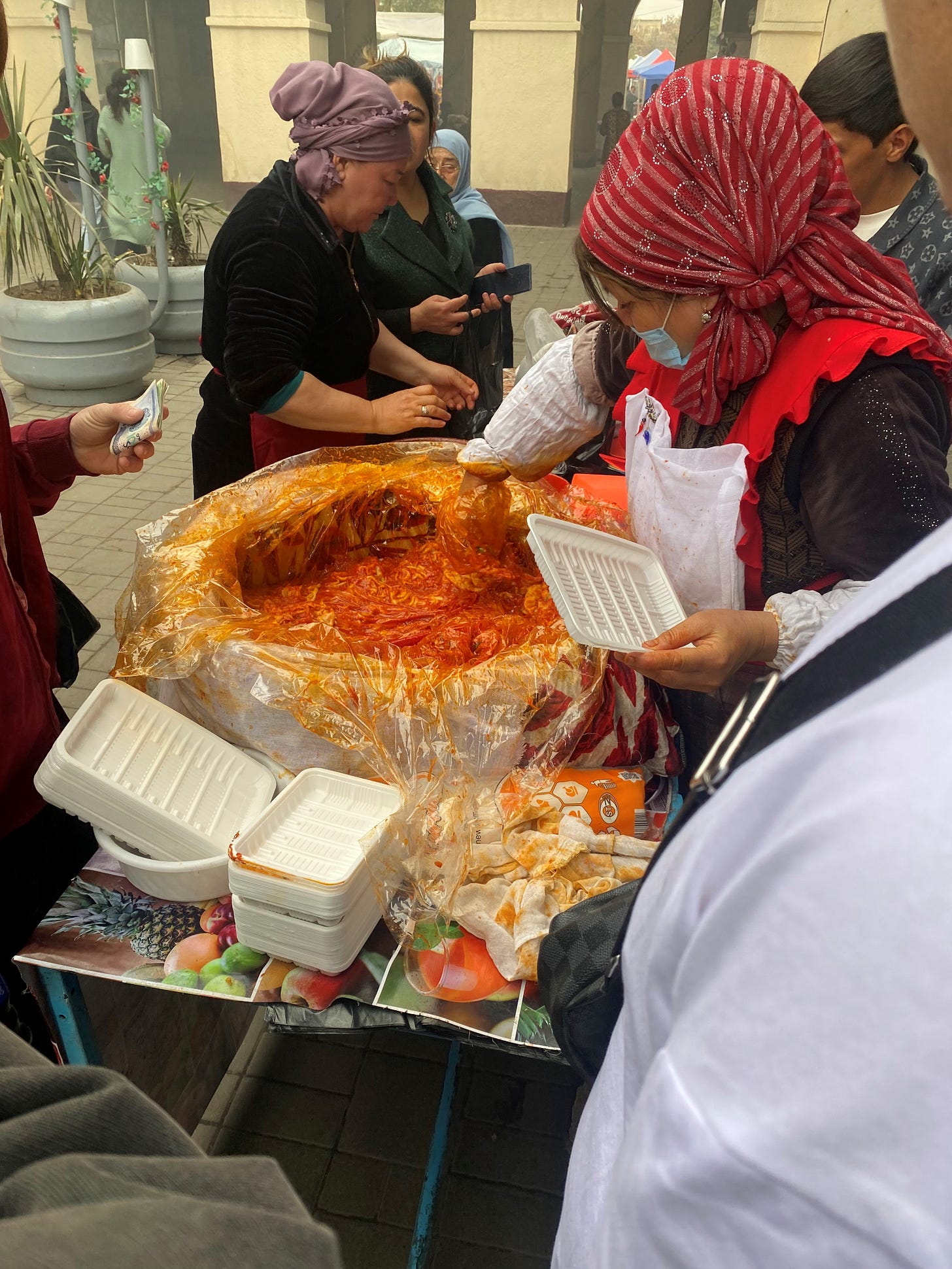




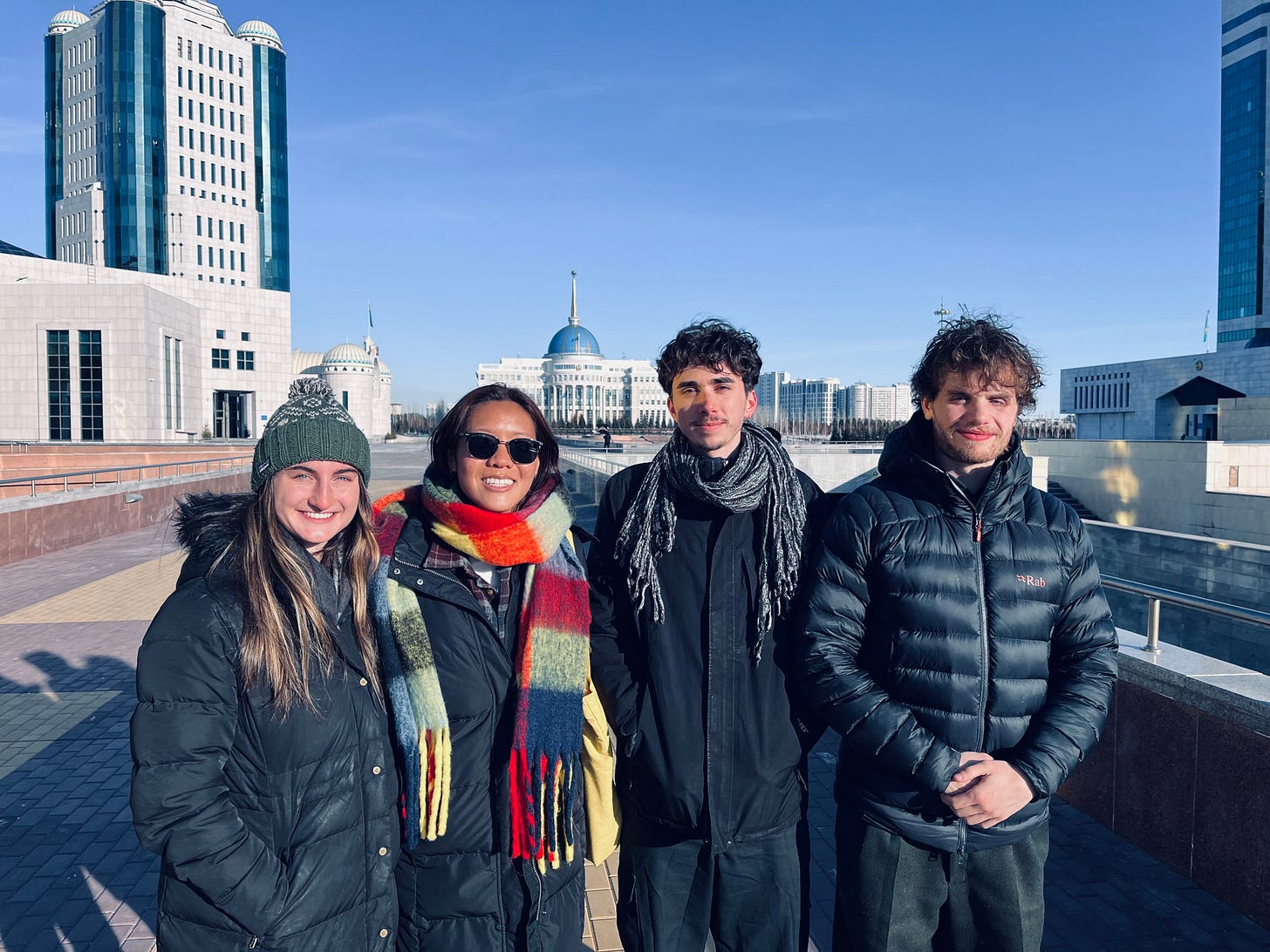
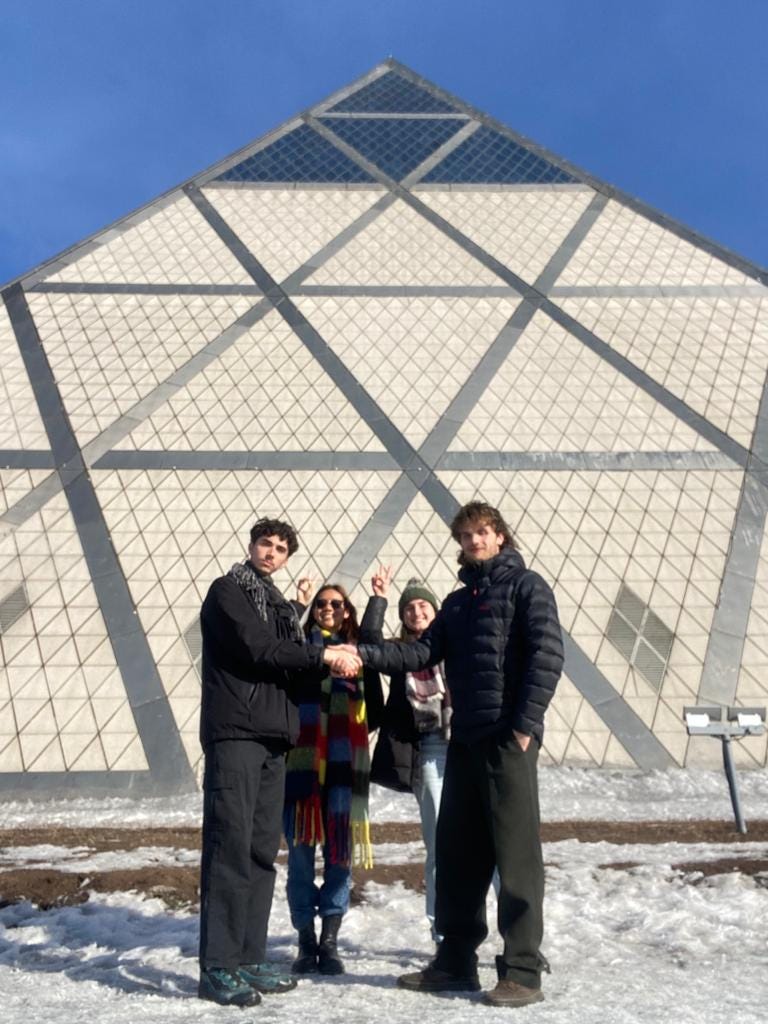

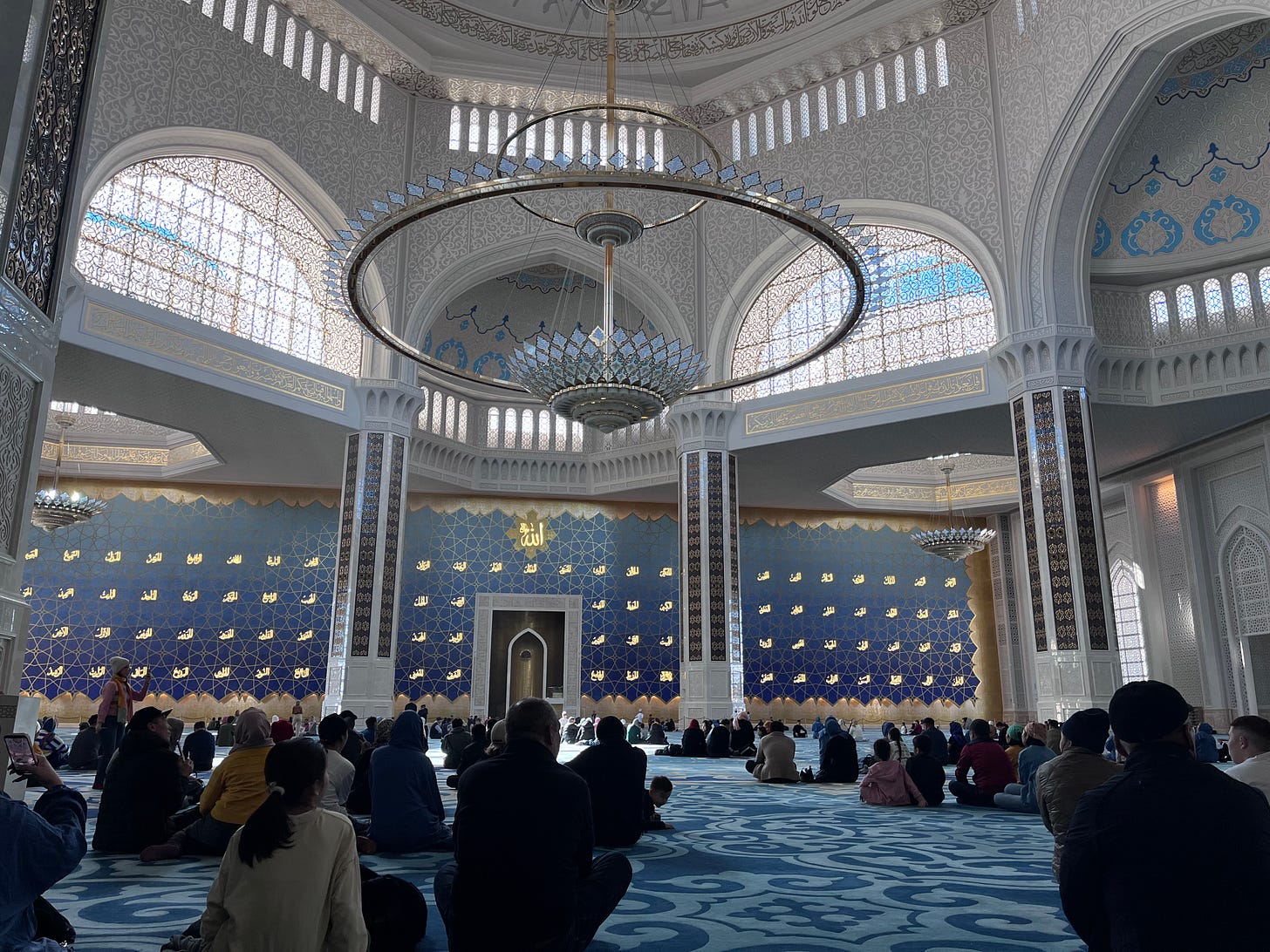
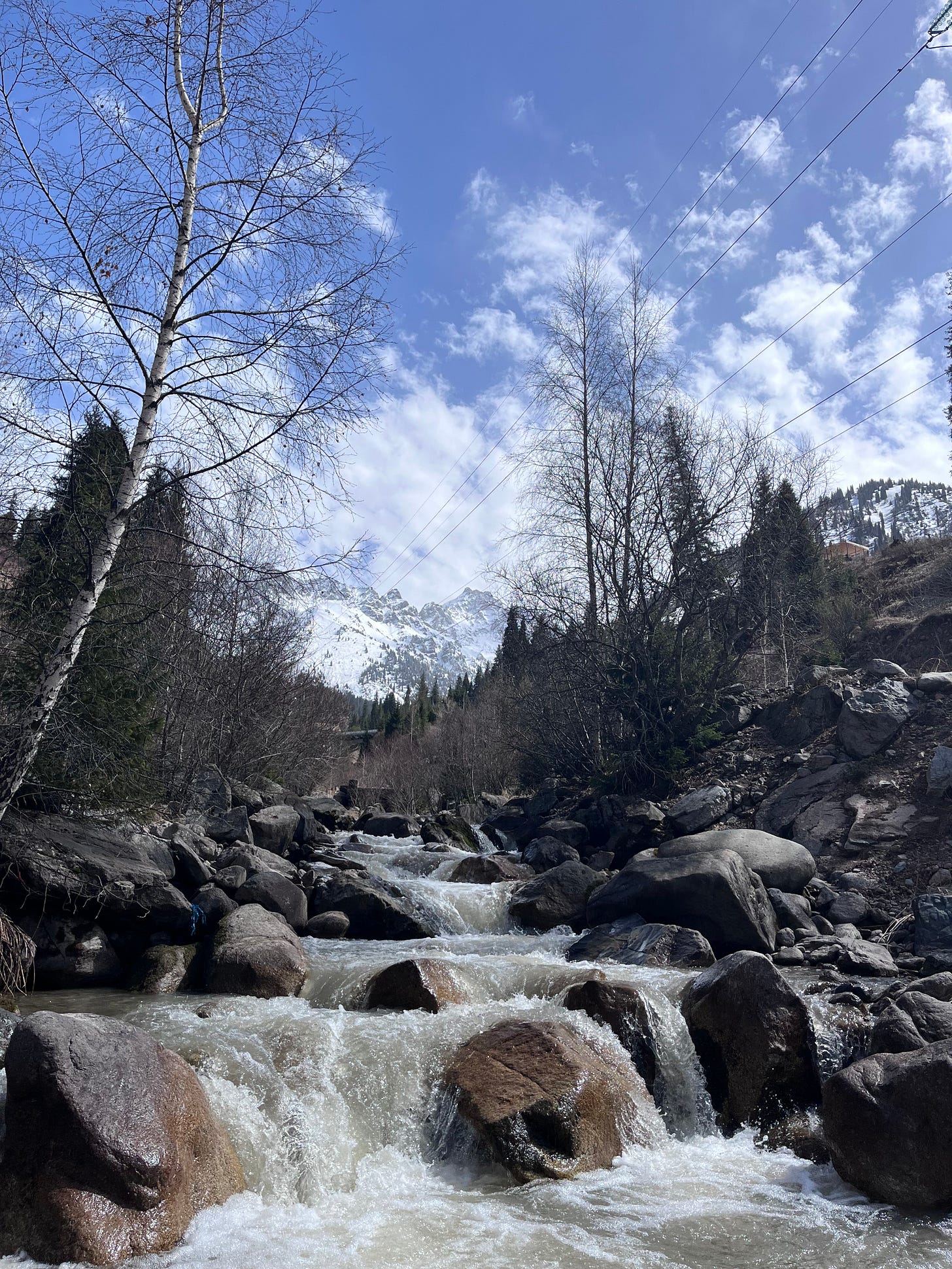

Nice post dude! I’m psyched to travel around the area with you in just a few months!
Durak!!!! I had forgotten that game. u gotta re teach me how to play!
third class uzbek trains sound a little scarier than amtrak, but don't look that much worse. third class and you still get a bed! on amtrak ur sleepin in ur seat, boss. amtrak only allows their alcohol, tho u can drink it. Not a cheap way to get drunk tho. How did the train smell? looks like a lotta stinky [redacted] feet.
Those threads on the edge of the carpet are the most likely to be noticed, i find. And life's better on the edges anyway.
Cities near mountains seem wonderful. how long a walk from city center up into the mountains?
crazy crazy you'll be back in august